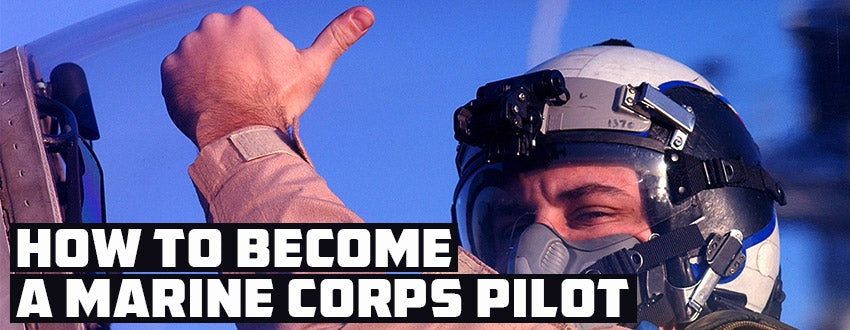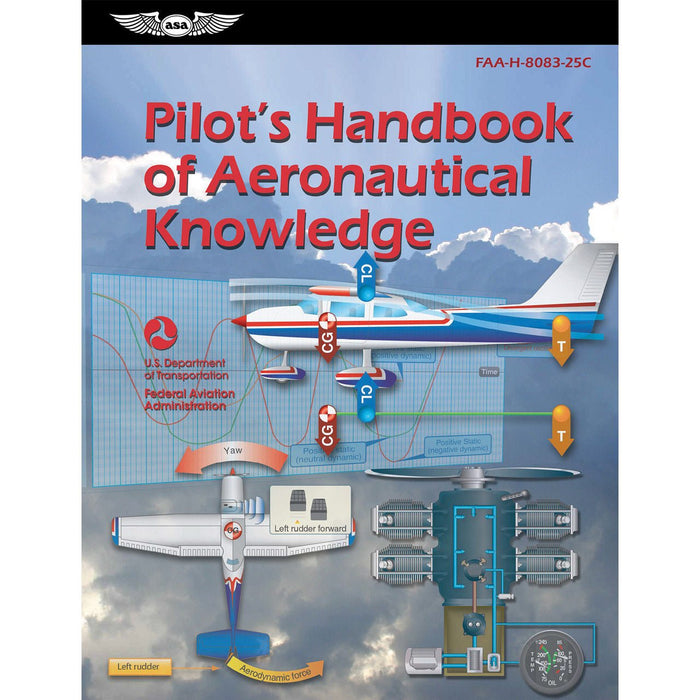How to Become a Marine Corps Pilot (Everything You Need to Know)
Not only do you get to serve your country and earn the privileges of being a veteran, but when you choose the military pilot route, you also benefit from high-speed training in some amazing aircraft. If you are considering becoming a Marine Corps pilot, here is everything you need to know about the process along with the answers to a few of your most pressing questions.

Featured Pilot Gear
Browse our selection of high-quality pilot supplies! Your purchase directly supports our small business and helps us continue sharing valuable aviation content.
Is Being a Marine Corp Pilot the Right Fit for You?
Not only do you get to serve your country and earn the privileges of being a veteran, but when you choose the military pilot route, you also benefit from high-speed training in some amazing aircraft.
If you are considering becoming a Marine Corps pilot, here is everything you need to know about the process such as learning the marine pilot requirements along with the answers to a few of your most pressing questions.

What aircraft do Marine Corps pilot fly?
The Marine Corps has a fleet of both fixed wing and rotary aircraft that you could be assigned to. The fixed wing lineup includes the F/A 18 Hornet fighter/attack jet and soon its planned replacement the F-35 Lightning II.
The AV-8B Harrier vertical/short takeoff and landing aircraft, the EA-6B Prowler electronic-warfare craft, and the KC-130 Super Hercules transport and refueler round out the fixed wing complement.
Marine Corps rotary aircraft include the CH-53E Super Stallion heavy lifter, the AH-1Z Super Cobra for close air support, the MV-22 Osprey transport plane/helicopter hybrid, and the versatile UH-1Y Huey for combat support, medevac, aerial reconnaissance, and assault support.
The Marine Corp also pilot various types of drones.
How much do Marine Corps pilots get paid?
In the military, pay is determined by rank and cumulative length of service. It is standardized across all branches of service. Newly minted Marine Corps officer pilots hold the rank of second lieutenant and a corresponding pay grade of O-1 (Officer 1).
According to the U.S. Department of Defense’s military pay tables for 2020, the basic pay rate for an O-1 with fewer than 2 years of service is $3,287.10 per month. By the time you reach 3 years of service, that amount has bumped up to $4,136.40. On the other end of the spectrum, an O-10 with over 40 years of service could earn up to $16,441.80 per month.
In addition to the basic pay, Marine Corps pilots may also be eligible to receive aviation incentive pay of $125 to $250 per month, hazardous duty incentive pay (HDIP) for flying in the amount of $250, and hardship duty pay of up to $150 per month depending on where they are stationed.
How long does it take to become a Marine Corps pilot?
From your first day of Officer Candidates School through the day you report to your first duty station, here is the timeline for becoming a Marine Corps pilot:
Officer Candidates School (OCS): 10 weeks
The Basic School (TBS): 6 months
Aviation Pre-Flight Indoctrination (API): 6 weeks
Primary Flight Training: Average of 22 weeks
Basic, Intermediate, and Advanced Flight Training: 27 to 44 weeks
Fleet Replacement Squadron: 6 to 12 months
Total Time: About 2 ¼ to 3 years
Step-By-Step Guide for How to Become a Marine Corps Pilot
1. Speak to a recruiter and decide if the Marine Corps is a good fit for you
Before you commit, do your research. Learn about the military and whether life as a Marine is right for you. Talk to a Marine Corps recruiter about how your career goals align with the Corps’ training opportunities and mission needs.
2. Confirm that you meet the Marine Corp’s basic qualifications for pilots
Let’s tackle the USMC pilot requirements. In order to be eligible to join the Marine Corps and enter the pilot pipeline, you must:
- Be at least 18 years old
- Receive your officer commission after your 20th birthday and prior to your 28th birthday
- Be a United State citizen
- Pass a Single Scope background check
- Pass a military physical exam
- Includes urinalysis, dental, hearing, HIV, hematocrit and lipid panel as well as an EKG, blood pressure, and pulse rate screening
- Meet pilot-specific physical requirements
- Weight of between 103 and 231 pounds
- Sitting height of 31 to 40.9 inches
- Sitting eye height of 26 to 31.4 inches
- Vision correctable to 20/20
- Full-color vision
- Full field of vision including depth perception
- Pass aviation physical
- Pass the initial strength test (IST)
- Hold a bachelor’s degree or be a current full-time student at an accredited university
- Meet one of the three test score minimums
- 1,000+ combined Math and English SAT score
- 22+ ACT composite score
- 74+ Armed Services Vocational Aptitude Battery (ASVAB)
- Meet minimum score on the Aviation Selection Test Battery (ASTB)
- Academic Qualifications Rating (AQR): 4
- Flight Officer Aptitude Rating (FOFAR): 6
3. Attend Officer Candidates School (OCS)
The curriculum of the ten-week Officer Candidates School (OCS) includes a blend of classroom learning as well as field training exercises. The purpose of this school is to prepare officer candidates to be leaders. Topics include general knowledge, history, navigation, communication, tactics, and leadership skills. Student Naval Aviators are evaluated based on leadership, academic performance, and physical fitness.
4. Receive your commission
Upon graduation from OCS, you will officially receive your commission. Congratulations – you are now a second lieutenant in the United States Marine Corps.
5. Attend The Basic School (TBS)
All newly commissioned Marine Corps officers must attend The Basic School (TBS) in Quantico, Virginia. The purpose of The Basic School is to impart a basic level of tactical competency and combat leadership skills to all new second lieutenants. The Marines are known for their esprit-de-corps, and instilling this sense of comradery and love of unit is another key focus of TBS.
6. Complete flight training
After completion of The Basic School, your training will become more customized to your profession. The Marine Corps breaks their flight training program down into three phases, all of which must be completed prior to you being considered a full-fledged Marine Corps pilot.
The three phases of flight training are:
Aviation Pre-Flight Indoctrination (API)
Think of pre-flight indoctrination as a six-week, 196 academic hour, ground school held at either Vance Air Force Base in Oklahoma or Naval Air Station Pensacola, Florida. In this initial training phase you will spend three weeks studying aerodynamics, aircraft engines, meteorology, aviation physiology and other academic topics. In the final three weeks of the school you will receive instruction in water and land survival.
The water survival course includes drown proofing and a 1-mile swim in a flight suit among other training evolutions. During land survival, you will learn valuable skills like how to build shelters, read a map, procure and purify water, and trap or gather food.
Primary flight training
During primary flight training, you will take to the air in a T-34C turboprop trainer. Your performance during the approximately 22 weeks you spend in primary training is important because instructors will be using your grades and their assessment of your aptitude to assign you to your specialty aircraft.
The more you excel, the greater the likelihood that you will be assigned the pipeline of your choice. Students will be given their aircraft specialization assignments near the end of primary flight training. Specializations include helicopters, jets, and turboprops.
Basic, intermediate, and advanced fight training
Now that you have been assigned your specialization, it is time for 27 to 44 weeks of aircraft-specific training. Training takes place in both the simulator and actual aircraft. The location and specifics of your training will depend on which specialization you are assigned. Expect to practice and earn certifications in more challenging skills like night flights, landing on an aircraft carrier, conducting aerobatic and combat maneuvers, and flying in formation.
7. Receive your gold wings
Upon completion of all three phases of your flight training, you will earn your gold flight wings and officially become a Marine Corps Aviator.
8. Transition into your career through a Fleet Replacement Squadron (FRS)
The final step in your journey to your first duty station is to spend 6-12 months with a Fleet Replacement Squadron. Here you will receive additional training and gain experience flying your designated aircraft. By the time you leave the FRS and report to your first duty station, you will be a mission-ready Marine Corp pilot.
Want to make sure you have what it takes?

|
Pilot's Handbook of Aeronautical KnowledgeProviding basic knowledge essential for all pilots, from beginning students through to the advanced certificates, this Federal Aviation Administration (FAA) publication introduces readers to the broad spectrum of knowledge required as they progress through pilot training. |

































